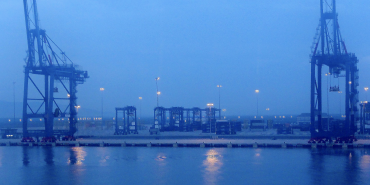Viewpoint: Global supply chain reaching ‘a critical moment in time

Headlines on China’s port problems dominate the news cycle, but the ripple effects of the delta variant expand way beyond the Middle Kingdom.
Trade is a global network and only works efficiently when all participants are healthy and cooperative. The U.S./China trade war ignited the U.S./Asia supply chain expansion. The ravages of the delta variant, however, have destroyed this “diversification.”
In the shadows of the news on the Yantian and Ningbo port closures, the impact of the delta variant across the entire global supply chain is being overlooked by the mainstream media and American consumer. The stress levels of logistics managers and supply chain managers are at all high-time highs — and for good reason.
It’s more than the price of the container, which is up over 500%. It’s the impact on the human capital in the supply chain. Remember, it takes people to make and move product. Containers tell this story.
In early August, the Vietnam Textile and Apparel Association (Vitas) warned that just 30-35% of the country’s textile and garment factories were operational and warned that “90% of the industry’s supply chain is broken.”
The country’s lockdown has had little effect on containing the virus. According to the Johns Hopkins Coronavirus Resource Center, in the past week, the country has reported record-high infection rates.
The pace of vaccinations in Vietnam’s textile and garment industry is still very low. The country has fully inoculated just 2% of its 98 million people. U.S. Vice President Kamala Harris announced during her bilateral meeting with Vietnamese Prime Minister Pham Minh Chính that 1 million doses would begin to arrive in the next 24 hours. This allotment brings the total vaccine donation to 6 million doses.
Vitas, The American Apparel and Footwear Association, and two other associations, sent letters to the prime minister, imploring the Vietnamese government to make vaccinating workers in the apparel, footwear, and travel goods production sectors a top priority.
“The U.S. has already provided 5 million doses, but we are advocating with our government [to] supply more on an urgent basis. We urge you to underscore this message and request such support as an urgent priority,” AAFA CEO Steve Lamar wrote in a letter to Chính last month. “We hope that you will prioritize these donated materials with these key industries and in the south, which has both a high concentration of new [COVID-19] cases and economic activity critical to the health of the economy.”
SEKO Logistics recently sent an alert to customers characterizing the situation in Vietnam as “deteriorating.” The company says warnings of vessel delays are growing because of congested ports and low productivity.
Citing the extension of the Ho Chi Minh lock down to Sept. 15, the global logistics company said it expects the second half of August through September to see up to a 30% lower throughput.
SONAR data clearly shows the impact of the factory closures with the decline in twenty-foot equivalent units (TEUs) anticipated in the next seven days.

Further dislocation of the U.S. supply chain can be seen in Bangladesh. Against the advice of health officials, 4,500 garment factories reopened on Aug. 1 during the fourth wave of the coronavirus. Larger factories supporting North America and European companies remained open. The daily positivity rate of infection as of Aug. 24 was 15.12%.
However, no matter how much these factories produce — and risk the lives of their workers — the movement of product is slow. According to MarineTraffic data, vessels are at port for three days.

SONAR’s Ocean TEU Index tracking the incoming Bangladesh import volume in the next seven days shows this decrease.

“We are at a critical moment in time,” said Brian Alster, general manager of third-party risk and compliance at commercial data and analytics firm Dun and Bradstreet.
“The continuation of port and terminal closures further weakens an already fragile global supply chain going into peak holiday shopping season,” Alster said. “The question for companies should not be ‘What can I do at the moment to identify immediate steps for remediation,’ but instead focus on ‘How can I mitigate the risk of future impacts to the delivery of goods and materials in the coming year?’”

While it is a given the port closures will continue as the spread of COVID-19 and other unexpected events persist, Alster said the ramifications to companies’ bottom lines will increase as shipment costs and incremental time needed to receive raw materials and goods becomes a major component of overall supplier costs.
“Ultimately this will raise the price of end consumers’ goods, particularly as inventory dwindles for items such as children’s toys, automobiles and home furnishings,” he said.
Like the large ripples a small pebble makes when thrown into a still lake, the swells created by COVID-19 are only beginning.
